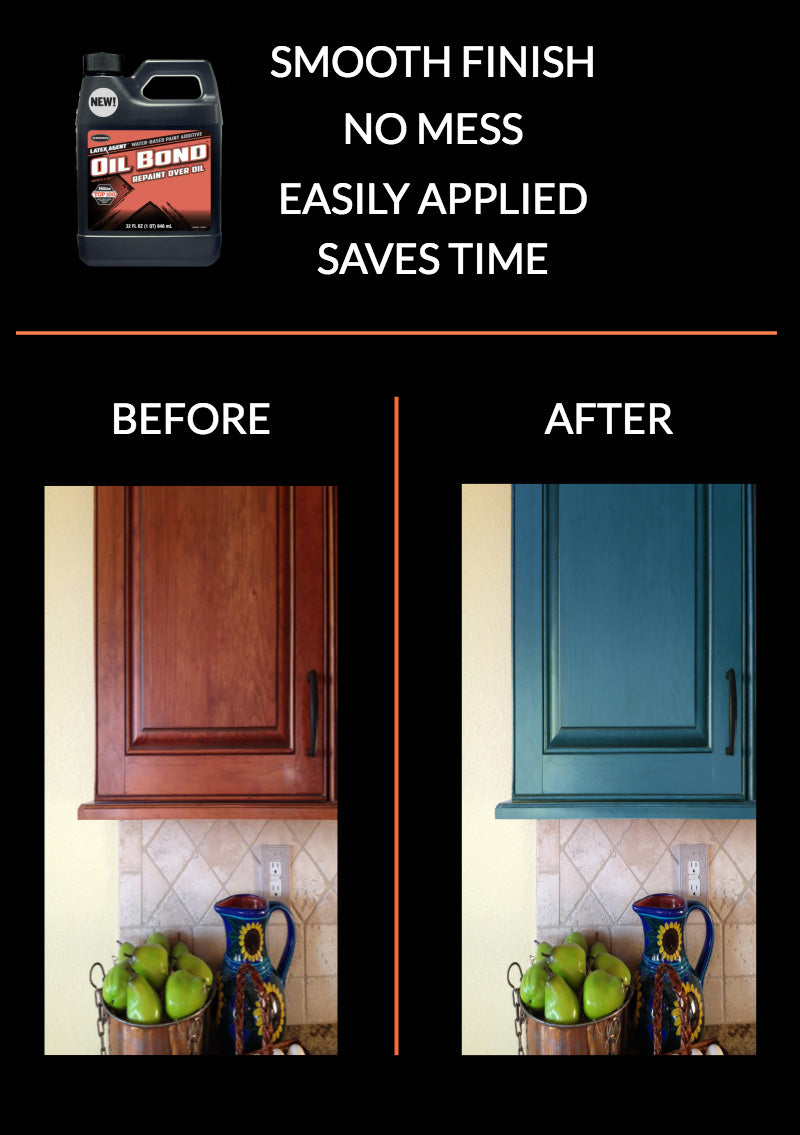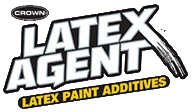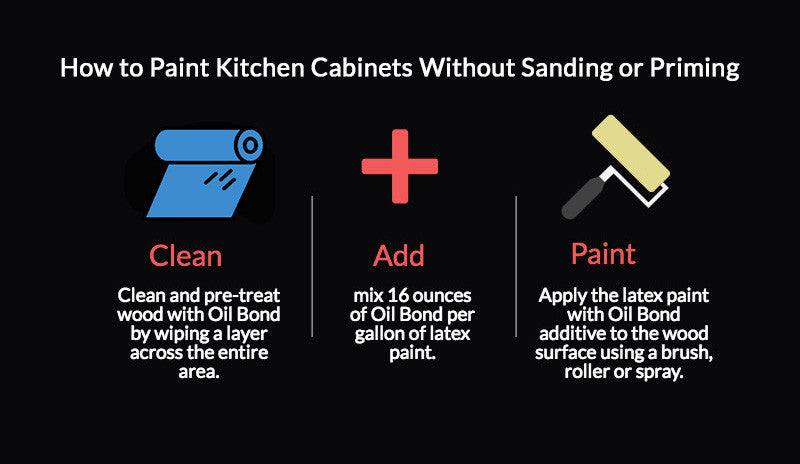How To Paint Kitchen Cabinets Without Sanding or Priming
Posted by : Latex Agent /
When it comes to DIY kitchen cabinets projects, most of us want it to be done quickly. And yet, we want the job quality of a professional painter. To achieve a professional level appearance, the surface of the kitchen cabinets needs to be prepared for best results.
To make this happen, traditional methods include sanding the cabinets, usually two times. This creates a “grip” for primers and paints to cover all kinds of finishes, and prevents beading, peeling and other blemishes that come over time.
What if we said you didn’t have to sand?

There’s another way. With Oil Bond you can paint directly over kitchen cabinets without sanding. Oil Bond improves adhesive properties of latex paint to give it a glass-smooth finish without all the work of sanding. No more effort. No more mess. All you have to do is wipe, mix, and paint.
Painting Kitchen Cabinets the Old Fashioned Way (Hard)
- Remove doors and hardware
- Clean the surface
- Sand
- Clean the surface again
- Prime
- Paint
- Reinstall doors and hardware
Painting Kitchen Cabinets with Oil Bond (Easy)
- Remove doors and hardware
- Wipe
- Mix
- Paint
- Reinstall doors and hardware
When all is said and done, Oil Bond users avoid sending thousands of dust particles and paint into the air. They’ll have taken less time, and saved a lot of hard labor.
This process also prevents a potentially dangerous scenario where the possibility of lead-based paint exists. If you have kids in the home, this is particularly important.
So, how can Oil Bond prevent sanding while maintaining a professional grade paint application (and notably reduce your time and stress)? We know, it sounds too good to be true. But, it isn’t.
Oil Bond is scientifically engineered to provide a perfect surface for latex paint application over wood with a finish. It’s perfect for kitchen cabinet painting projects. By wiping a layer of Oil Bond directly onto the cabinet surfaces (see before and after pictures on the infographic in this post), the paint will naturally adhere the same way as a freshly sanded surface.
Oil Bond won’t affect paint finish, durability, color, or UV Rating. You can rest easy with the thought that your paint won’t be negatively affected by Oil Bond.
Another factor to consider is primer. If starting with a white primer isn’t critical for your kitchen cabinet paint color (for color-matching purposes), Oil Bond creates the same effect primer does, except it won’t appear white. The Oil-Bond applied surface acts just like it’s been primed.
Wood is one of the most difficult surfaces for paint topcoat adhesion. Yet, with Oil Bond, the surface will become clean, deglossed and pre-primed, ready for paint.

One note: Oil Bond only works with real wood surfaces with a finish, not wood surfaces featuring laminate or plastic surfaces. Most kitchen cabinets are perfect for Oil Bond.
Ready to paint your kitchen cabinets? Click here for a complete project guide on painting your kitchen cabinets with Oil Bond. Let’s see what you can create!

